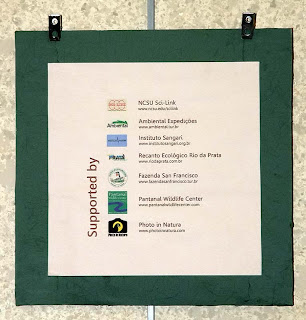.
.
. The image of a Common Potoo with its chick
The image of a Common Potoo with its chick
was my best Christmas present!
Photo: © Daniel De Granville, 2008
.
.
 The image of a Common Potoo with its chick
The image of a Common Potoo with its chick was my best Christmas present!
Photo: © Daniel De Granville, 2008
After leaving the Japi Mountains and driving for 15 hours, we arrived at our new home in Bonito early evening, right after sunset. Besides the heat, the first and most remarkable impression was the soundscape, dominated by the nearly deafening call of cicadas. Up on the tree by the porch, a tropical screech-owl was also welcoming us.
The next morning came to show that I had to find my cameras and lenses ASAP, among piles and more piles of cardboard boxes that brought our belongings in a truck. The bird songs, mainly jays, wake us up early. During the first day, at least three tegu lizards – one of them over three feet long – took calm strolls across our garden, not caring about our presence. More things came as the week went by, including a family of coatis in our backyard and a harmless vine snake who decided to check out our toilet bowl (!).
The present post brings two of the first photos that I took during this new phase, in the hope that much more will come. One of them (shiny cowbird) was taken from our porch; the other (potoo) at a friends’ house less than two miles away. I could only register the scene thanks to the kindness of these friends, who told me about the birds in their garden and opened the doors so that I could photograph. A great Christmas present!
If our porch at the Japi Mountains offered countless photo opportunities for my moments of lazy photographer, I bet that Bonito will be no different! :-)

























